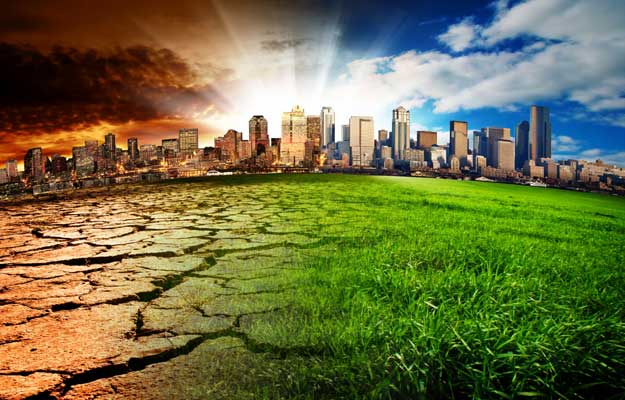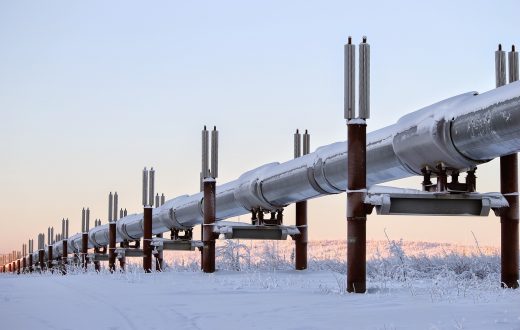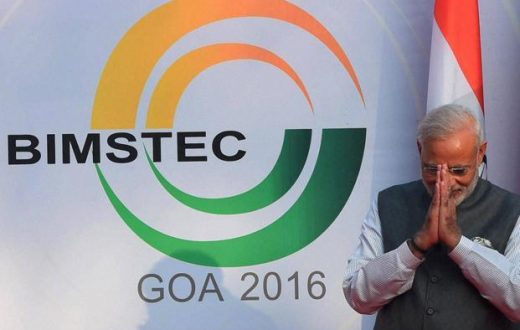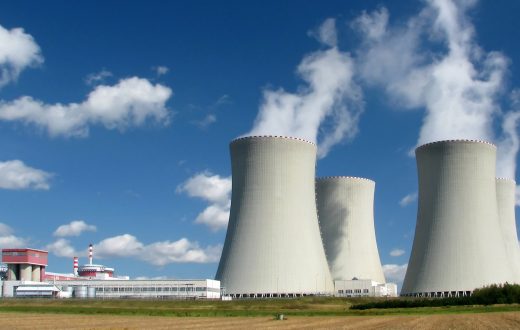Essay by Julien Garcia, member of HEIP Junior Consulting
The COP 21 was the most important international meeting about environment ever made. It led to ambitious promises and brought a feeling of hope about the climatic challenge. However, the world is used to hear illusionary promises especially on the subject of environment. In fact, the emission gap report highlights every years the difference between the promises of politicians about the reduction of greenhouse gases emission and the opposite effect of their policies. If this double discourse continue, it could be really harmful for the Earth and therefore, for Humanity.
In his documentary “Disruption”[i], Ricken Patel defines the Emission Gap as the difference between the international goal of limitation of the rise of temperature – 2°- and the estimated consequences of the actual politics – 6°[ii].
At first look, this gap could be seen as the consequence of hypocritical discourses of politicians. However, the reality is more complex and the question of the origins of this gap necessitates a deeper analysis. Find out the reasons of this difference is paramount in the fight against climate change because it represents what prevent the politicians from respecting their commitments.
In order to highlight the origins of the Emission Gap, our development will be divided in two parts: an analytic part and a case study. The first part will try to highlight the misunderstood around the concept of sustainable development and then, linked economic growth to greenhouse gases emission. The second part, coming in a second article, will be more concrete because it will study the phenomenon highlighted in the first part through the example of a southern country, India, and a northern country, Germany.
II – The Emission Gap In States Policies
The Emission Gap is not only a concept that we can found in reports or theories, it is something that have concrete translations in the real world. This part will highlight the contradiction within the policies of two countries, a northern one and a southern one. The southern country will be India because it is a perfect representation of the gap between the prioritization of economic growth at the expanse of ecologic considerations. The northern country will be Germany because it represents a more tragic example: an ambitious country that take the wrong decisions and ended up spending a lot of money without any positive result regard to greenhouse gases emission.
-
Prospective From The South: India
The position of India during the COP 21 represents the tendency that we have seen in the first part. Narendra Modi tells the world that his priority was economic growth, even if it requires massive use of fossil fuels[i]. At the end of the negotiations, the Indian prime minister concedes to make some effort in favor of the climate but his priority was still the development of his economy.
– Small initiatives in favor of the environment
At the COP 21, Modi accept to raise the part of solar in the energy mix of his country till 40 % in 2030[ii]. However, he did not accept any restrictions regards to greenhouse gases emission, pollution or usage of fossil fuels. Without any restrictions in those areas, this increase of the importance of solar energy will fall into the category of the pointless initiatives without any real impact on the environment.
In this category, you can also find the interdiction of the matriculation of the car which consumes too much diesel in the capital of New Delhi for instance[iii]. New Delhi steals the title of most polluting city of the world recently and in order to fight against the emission of fine particles. However, those restrictions last only two weeks; therefore, there was not any real impact other than the satisfaction of the politicians to have done something.
– Economic growth for priority
India is one the country with the highest growth rate in the world; it even trumped China last year[iv]. This rate is the representation of the policy of the Indian Prime Minister.
Modi’s primary goal was the economic growth, he see in it the way to bring Indian people out of poverty. In order to fulfill this economic growth, the government put a big emphasis on the key sectors of India: telecommunication, building construction, pharmacy and the automobile sector[v].
The growth in those sectors create a significant amount of pollution: between 1990 and 2012, greenhouse gases emission rose of about 67 %[vi]. For the future, the government wants to prolong this trend as long as possible. For that reason, India does not accept any kind of restriction regards to the use of fossil fuel.
The coal stay the main energy source of India: they are now the second consumer of the world, behind China but before the United States of America[vii]. The government affirm want to double the coal production and, therefore, open three new mines in the country in 2016[viii]. An against the tide decision that fail within the range of the anti-environment decisions taken for economic purposes
-
Prospective From The North : Germany
The case of Germany is quite different from the one of India. In fact, Germany is consider as one of the country where environmentalism is the more spread. Moreover, the central state has already attempt some really ambitious policies[ix]. Unfortunately, the assessment is mitigated.
– A mitigated energy transition
Between 1995 and 2014, Germany invests around 350 billion of euros in the renewable energy in order to make them represent 26 % of their energy mix, against 4 % in 1995[x]. This plan put Germany with the most virtuous countries regards to that standard.
However, the greenhouse gases emission of the country did not shrink in that period, and the dependence of Germany to foreigner fossil fuels neither. The assessment is even worth when you consider that during the same period the population shrinks of around 1 million of people, because it means that the greenhouse gases emission per capita increase during that period[xi].
The biggest reason of that failure is that renewable sources of energy did not replace the fossil fuels. In fact, the amount of fossil fuel use remain roughly stable during the same period, therefore, the renewable energy were added to the energy capacity of the country rather than use as a way to substitute the coal and the gases. So even if the percentage of renewable energy rose in the energy mix, the absolute energy consumption rose and the greenhouse gases emission with it.
This example points out one of the main contradiction of our understanding of sustainable development. Germany increased his part of renewable energy in his energy mix which can be seen as a good step into the fight against climate change; however, because it was done without a policy of absolute reduction of fossil fuel consumption, this policy was useless regard to the environment.
– A surplus of energy required in order to support economic growth
The scheme is analog to the situation of India: the surplus of energy is required in order to support economic growth.
The GDP of Germany is 5 % superior to its GDP of 2007 and that is the only country of the OECE in that case. This unique situation was made possible by records exportations within that timeframe.
The economy of Germany is based on the industrial sector and exportations. Industry is a sector that leads to a significant amount of greenhouse emission, from the production to the exportation. However, restrain the industrial sector has never been an option for Germany because its primary goal is economic growth.
Therefore, the renewable energy was used in order to sustain the energetic needs of the production and the exportation in the industrial sector.
This paradox highlights, once again, the antagonism between the reduction of greenhouse gases emission and economic growth; the core of the Emission Gap.
Conclusion:
Despite all the discourses about sustainable development, the primary goal of politics is still economic growth. An economic growth which is historically linked to an increase of greenhouse gases emissions.
In order to embrace the environmental challenge, politicians have to make a dramatic shift into their vision of development. Two directions are viable, a progressive reduction of economic growth until its stop or the invention of a new kind of economic growth, absolutely de-correlate of greenhouse gases emission.
In either case, economic growth as we know it today has to stop and as long as our politicians do not take that into consideration, the Emission Gap will carry on.
[i] http://www.france24.com/fr/20151202-cop21-inde-charbon-renouvelable-climat-fossile-paris-environnement
[ii] http://www.lemonde.fr/cop21/article/2015/10/02/cop-21-l-inde-s-engage-a-minima-sur-le-climat_4780644_4527432.html
[iii] http://www.lemonde.fr/pollution/article/2015/12/16/les-ventes-de-voitures-gourmandes-au-diesel-provisoirement-suspendues-a-new-delhi_4832888_1652666.html
[iv] http://www.rfi.fr/economie/20151130-inde-rythme-croissance-depasse-celui-chine-narendra-modi
[v] http://www.rfi.fr/economie/20151130-inde-rythme-croissance-depasse-celui-chine-narendra-modi
[vi] http://www.lemonde.fr/cop21/article/2015/10/02/cop-21-l-inde-s-engage-a-minima-sur-le-climat_4780644_4527432.html
[vii] http://www.rfi.fr/emission/20160125-contre-courant-inde-mise-fond-charbon-energie
[viii] http://www.rfi.fr/emission/20160125-contre-courant-inde-mise-fond-charbon-energie
[ix] http://www.novethic.fr/lapres-petrole/transition-energetique/isr-rse/transition-energetique-2015-annee-de-tous-les-records-en-allemagne-143805.html
[x] JANCOVICI Jean-Marc, Dormez-tranquilles jusqu’en 2100 et autres malentendus sur le climat, Paris, Odile Jacob, 2015
[xi] World Bank Data








